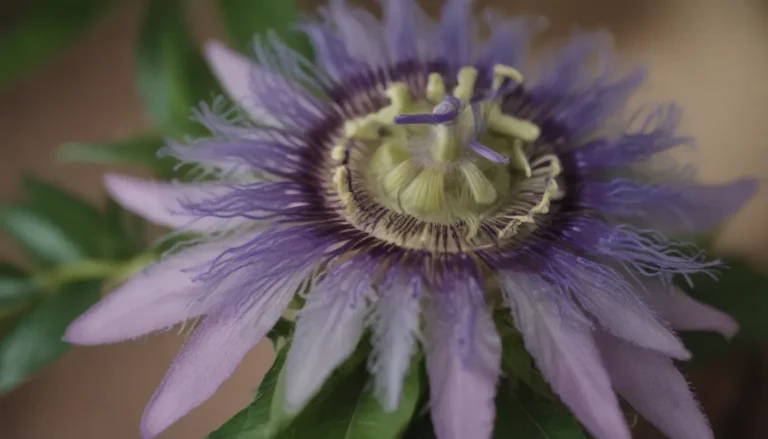The Ultimate Guide to Growing and Caring for Gold Dust Plants

Welcome to the ultimate guide on how to grow and care for the stunning gold dust plant (Aucuba japonica). If you’re looking to add a pop of color and interest to your garden or indoor space, this slow-growing evergreen shrub is the perfect choice. In this comprehensive article, we’ll delve into everything you need to know about gold dust plants, from planting and watering to pruning and propagation. So, grab a cup of your favorite beverage, sit back, and let’s transform your space with the beauty of gold dust plants!
Introduction to Gold Dust Plants
Native to Japan, the gold dust plant is also known as spotted laurel or Japanese laurel. Its dark green leaves are splashed with yellow and specks of gold, creating a visually stunning foliage that brightens up any shady area. In the spring, this plant produces tiny purple-maroon flowers with creamy white anthers, adding another layer of beauty to your garden. While gold dust plants are slow growers and can take years to reach maturity, they are well worth the wait for the vibrant touch they bring to your landscape.
Planting Your Gold Dust Plant
When it comes to planting your gold dust plant, timing is key. The best time to plant this shrub outdoors is in late spring or early summer after the average last frost date in your area. Here are some key tips to keep in mind when planting your gold dust plant:
- Choose a location with partial shade to protect the plant from bright afternoon sunlight.
- Ensure the soil is moist, organically rich, and well-drained.
- Water newly planted gold dust plants weekly (or even twice a week) through their first growing season.
- For indoor plants, place them near a window that provides indirect sunlight to prevent leaf scorching.
- Use high-quality potting soil with good drainage when potting or repotting your gold dust plant.
Caring for Your Gold Dust Plant
Now that your gold dust plant is in the ground or a pot, it’s time to focus on its care and maintenance. Here are some essential care tips to help your plant thrive:
Light
Gold dust plants are ideal for low-light conditions, such as the north side of a house. They prefer partial shade and should be shielded from intense afternoon sunlight to prevent leaf damage. During winter months, be cautious of sunlight that can scorch and blacken the leaves.
Soil
Gold dust plants thrive in moist, organically rich, well-drained soils. While they can tolerate average to poor soils, ensure they are not waterlogged to prevent root rot. Good soil drainage is crucial for the health of your plant.
Water
In their natural habitat, gold dust plants grow in moist woodland areas, thickets, and valleys. When watering your plant, aim for consistently moist but not waterlogged soil. Mature plants have good drought tolerance and will only need to be watered once every few weeks. Newly planted plants should be watered more frequently during their first growing season.
Temperature and Humidity
Gold dust plants prefer cooler climates and can withstand frigid temperatures as low as -5 degrees Fahrenheit. When grown indoors, ensure they are not placed near sources of heat, and maintain a cool room temperature for optimal growth.
Fertilizer
Gold dust plants respond well to feeding but avoid overfertilizing, as this can lead to soft growth and winter damage. Use a slow-release or water-soluble fertilizer in early spring when the plant begins to bloom. For container-grown plants, fertilize monthly during the growing season for best results.
Pruning and Propagation
To keep your gold dust plant healthy and looking its best, regular pruning is essential. Prune in the spring to control growth and maintain the desired shape of the plant. Propagation of gold dust plants can be done through cuttings from both male and female plants. Here’s a quick guide on how to propagate your gold dust plant:
- Take cuttings from both male and female plants.
- Label the cuttings appropriately.
- Establish pollination between male and female plants for fruit production.
Common Pests and Problems
While gold dust plants are relatively low-maintenance, they can be susceptible to fungal diseases and pests. Watch out for signs of root and crown rot, which can be caused by overwatering and poor drainage. Insects such as nematodes and mealybugs can also be attracted to gold dust plants. If you notice any issues with your plant, take prompt action to address them and prevent further damage.
Conclusion
In conclusion, growing and caring for gold dust plants can be a rewarding experience for any plant enthusiast. With the right conditions and maintenance, these stunning shrubs can thrive and add beauty to your garden or indoor space. From planting and watering to pruning and propagation, this guide has covered everything you need to know to successfully cultivate and care for your gold dust plant. So, bring some golden sparkle into your life with the delightful gold dust plant!
Remember, patience is key when growing gold dust plants. With time and dedication, you’ll be rewarded with a vibrant and flourishing addition to your plant collection. If you have any questions or need further assistance, don’t hesitate to reach out to your local nursery or gardening experts for guidance. Happy gardening! 🌿✨





